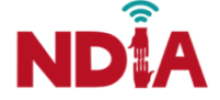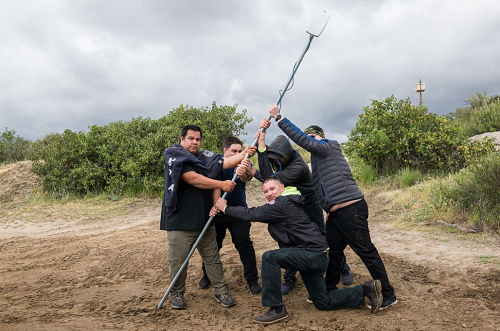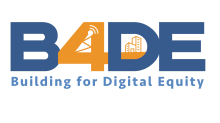
With billions of federal dollars on the horizon to support broadband infrastructure and digital inclusion, it is essential that states, local officials, service providers, and other organizations work effectively with Tribes so that those living on Tribal lands get connected.
Last week, the National Digital Inclusion Alliance (NDIA) hosted Dr. Traci L. Morris, Executive Director of the American Indian Policy Institute (AIPI) at Arizona State University for a webinar titled “Indigenous Digital Sovereignty: From the Digital Divide to Digital Equity,” which situated Tribal broadband work and Tribal sovereignty in the context of recent federal funding opportunities like BEAD.
“Sovereignty and self-determination are critical aspects of broadband and telecommunications investments in Tribal communities. Putting in a network is an act of self-determination – it is nation-building. It is exercising sovereignty in the active sense. As the United States makes historic investments [in broadband], we must hold it to upholding its trust responsibility to our Nations.” - Dr. Traci L. Morris
A member of the Chickasaw Nation of Oklahoma, Morris has led AIPI for 10 years, and has 14 years of experience in digital equity and inclusion, network neutrality, and Tribal broadband. Morris co-authored Tribal Technology Assessment: The State of Internet Service on Tribal Lands (2019), which helped to fill a gap in quality data on connectivity needs in Indian Country.
Morris’s webinar dug into her own participatory research data investigating the digital divide in Indian Country, which was prompted by a dearth of quality data representing connectivity needs for Native Americans living on Tribal lands.

“What little data there is comes from a handful of federal reports [which are] conflicting and incomplete at best,” said Morris. “Much of that is due to differing metrics, the fact that the data is carrier-reported and not independently verified, or a dependence on flawed datasets, making it impossible to compare and contrast.”
She emphasized that the new FCC maps don’t fix these problems, as they rely on the same underlying data sources. She also mentioned that data sources like the census are not granular enough to appropriately represent many Tribal communities, some of which are very small.
Morris also spoke about the ways existing data fails to reflect the connectivity and technology experiences of the people who live on Tribal lands, as well as her outreach methods for reaching Tribal communities and gathering high quality data. Some of these include attending the Gathering of Nations, other powwows, and the Indian Market to speak to tribal citizens in person. She also partners with the National Congress of American Indians (NCAI) and the Native American Finance Officers Association to distribute surveys electronically.

She emphasized that states, when putting together their broadband plans, should engage in meaningful Tribal consultation, and that this should start at the beginning of the planning process, rather than as an afterthought at the end.
Morris also highlighted that as broadband improves on Tribal lands and more members get connected to the Internet, Tribes should ensure that their community data and the data that runs through their networks is well protected.
Digital literacy work will also become critical so that people trust and understand how to leverage connectivity for things like visiting the doctor remotely (telehealth), setting up remote learning for their children, or taking their businesses online.
Morris concluded by inviting folks to connect with each other and to reach out to her to dig deeper into Tribal broadband issues.
“You all are at the forefront of this. Money aside, we’ve never had this many people who are interested in this before,” she said. “You all have the ability to hold folks accountable.”
Find NDIA’s blog post about the webinar here. Watch the full webinar below:
Contact Dr. Morris at t.morriss@asu.edu.
Inline map of Tribal Nations in the continental U.S. courtesy of Wikimedia Commons, Attribution-ShareAlike 4.0 International (CC BY-SA 4.0)







